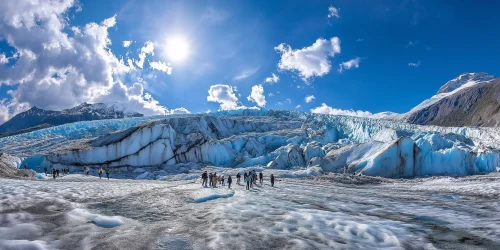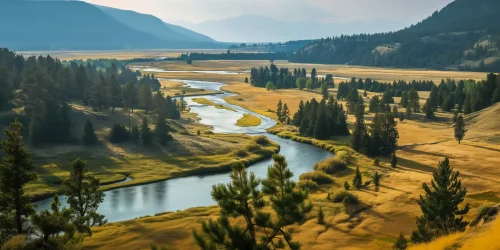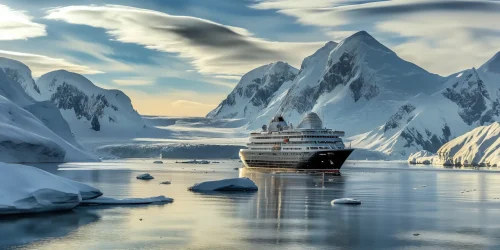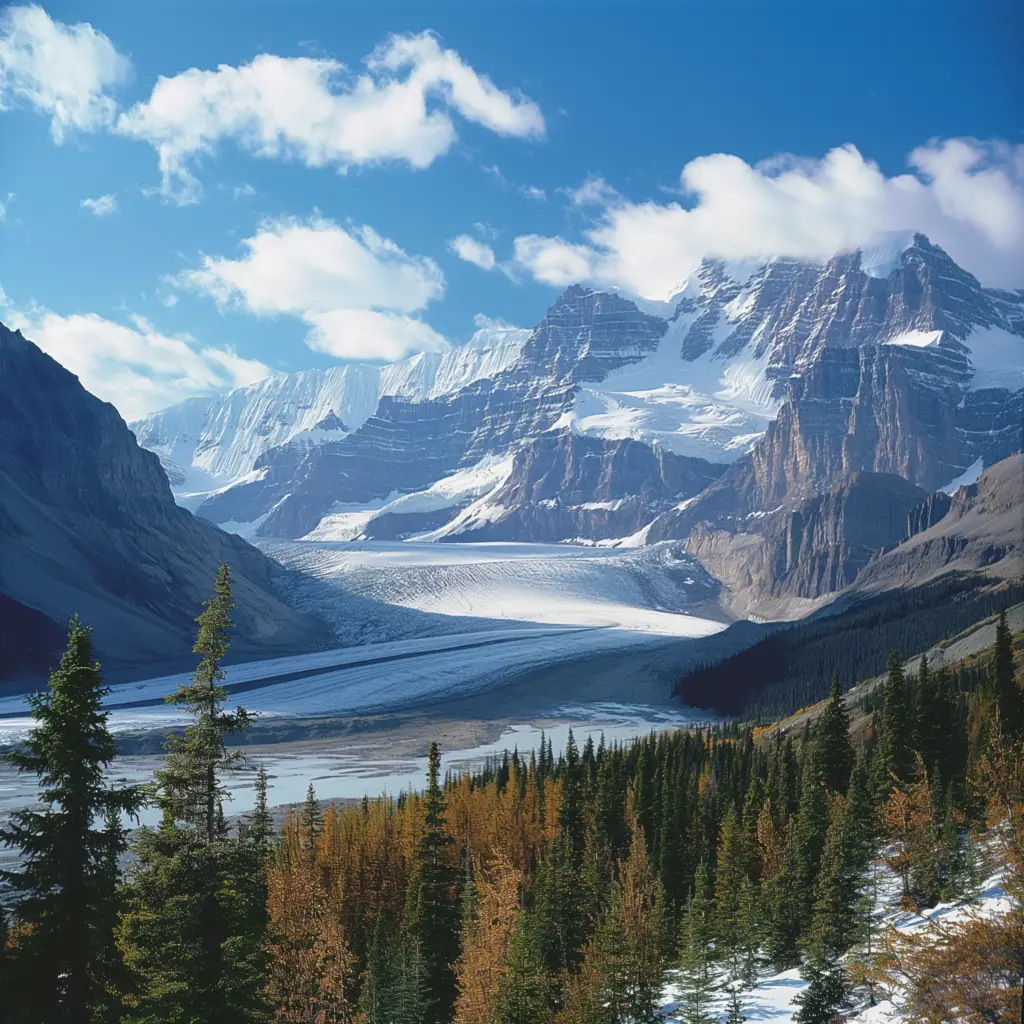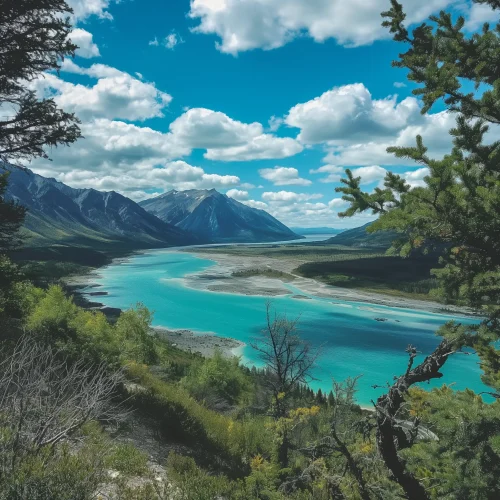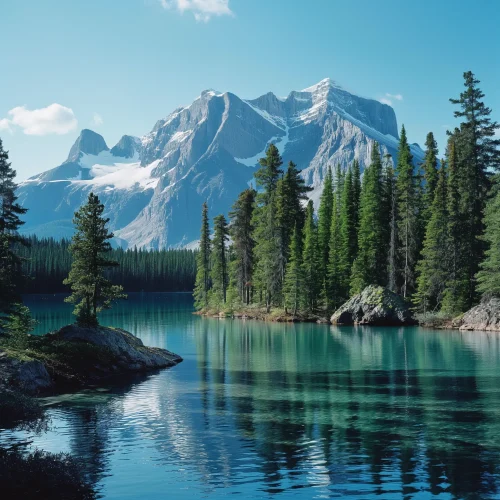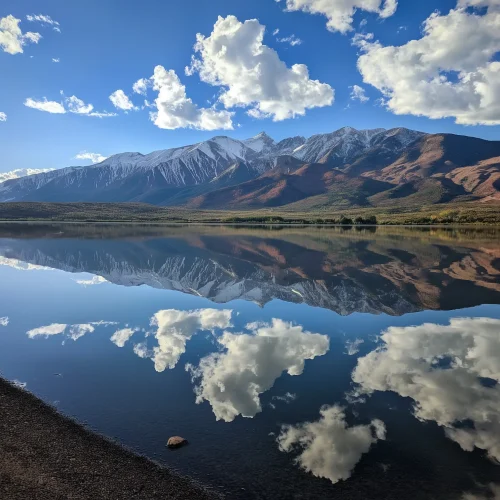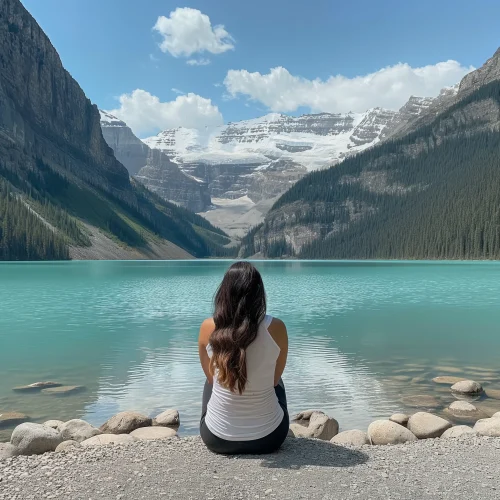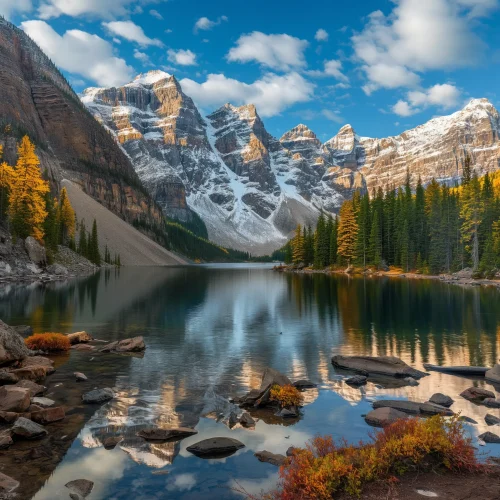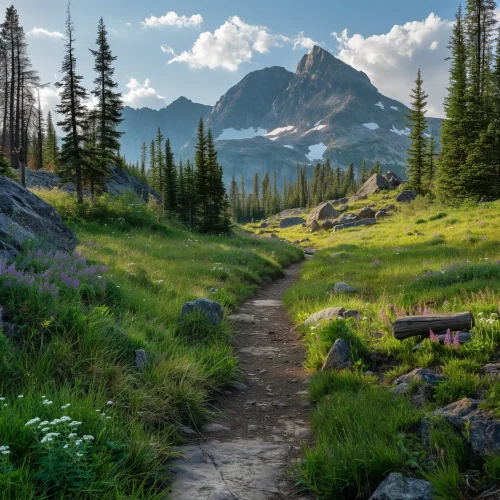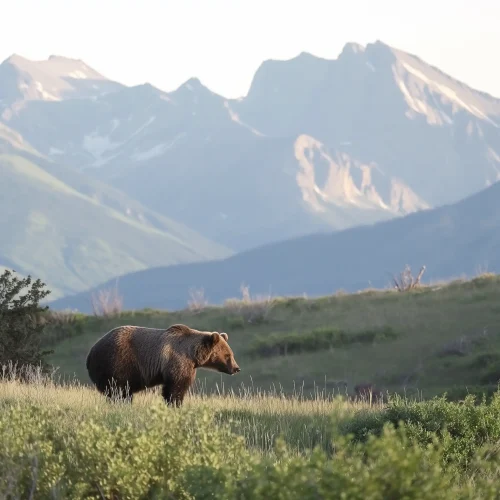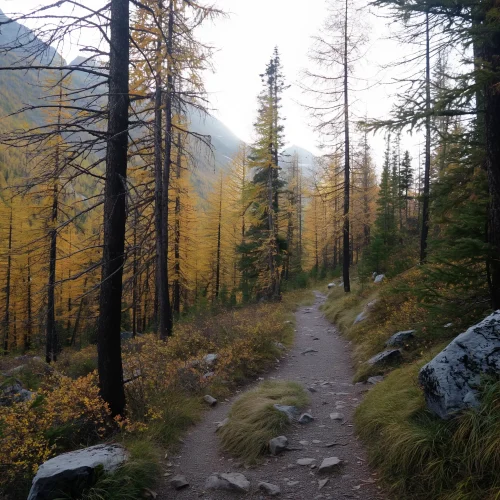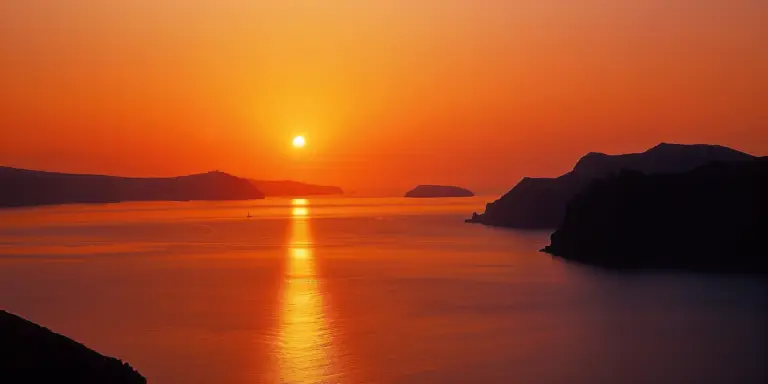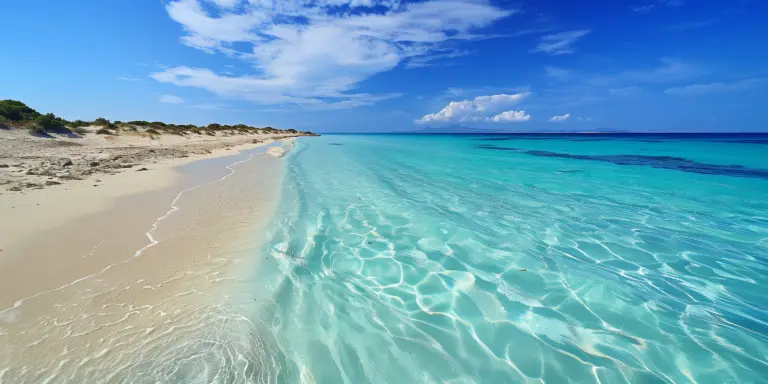The Columbia Icefields, located in the heart of the Canadian Rockies, is one of the largest icefields in North America. Spanning approximately 325 square kilometers, this glacial expanse sits astride the Continental Divide along the border of Alberta and British Columbia. The icefields are a must-visit for travelers seeking to witness the raw, icy beauty of ancient glaciers and the stunning landscapes that surround them.
The Magnificent Glaciers
The most accessible and popular glacier within the Columbia Icefields is the Athabasca Glacier. Stretching over six kilometers, this glacier flows down from the Icefield and can be easily accessed via the Icefields Parkway. Visitors can take guided tours on specialized Ice Explorers, large vehicles designed to traverse the icy terrain, offering a unique opportunity to step onto the glacier and explore its surface. For those preferring a less commercial experience, the Glacier Skywalk, a glass-floored observation platform, provides stunning views of the glacier and the surrounding valley.
In addition to the Athabasca Glacier, the Columbia Icefields feed several other significant glaciers, including the Saskatchewan Glacier, Dome Glacier, and Stutfield Glacier. Each of these glaciers contributes to the area’s dramatic landscape, with massive icefalls, crevasses, and seracs forming intricate patterns across the ice.
The Columbia Icefields are a remnant of the last Ice Age, and their formation dates back thousands of years. They play a crucial role in the hydrology of the region, as they are the source of several major rivers, including the Athabasca River, North Saskatchewan River, and Columbia River. These rivers eventually flow into three different oceans: the Arctic, Atlantic, and Pacific, making the Icefields a vital component of the continental water divide.
Outdoor Adventures
One of the most popular activities in the Columbia Icefields is taking a guided tour on the Athabasca Glacier. These tours provide a safe and educational experience, where knowledgeable guides share insights about glaciology, the history of the Icefields, and the impact of climate change on these majestic ice formations.
For the more adventurous, several hiking trails offer stunning views of the glaciers and the surrounding mountains. The Wilcox Pass Trail is a favorite among hikers, providing panoramic views of the Icefields and the valley below. The Toe of the Athabasca Glacier Trail offers a shorter hike that brings visitors close to the glacier’s edge.
Photographers will find endless opportunities to capture the beauty of the Columbia Icefields. The contrast of the icy blue glaciers against the rugged mountain peaks creates dramatic and captivating scenes. Early morning and late afternoon light provide the best conditions for photography, with softer light and longer shadows enhancing the textures and colors of the landscape.
Climate Change and Conservation
The Columbia Icefields, like many glaciers around the world, are being impacted by climate change. Over the past century, the Athabasca Glacier has been steadily retreating, losing significant ice mass. This retreat serves as a stark reminder of the broader impacts of global warming and the importance of conservation efforts to protect these natural wonders.
Practical Tips for Visitors
The best time to visit the Columbia Icefields is from late spring to early fall (May to September) when the Icefields Parkway is fully open, and the weather is more favorable for outdoor activities. During these months, the glaciers are more accessible, and guided tours are available.
The Columbia Icefields are located along the Icefields Parkway (Highway 93), approximately halfway between Jasper and Banff. This scenic drive is considered one of the most beautiful in the world, offering stunning views of mountains, valleys, and glaciers along the way.
Several lodging options are available near the Columbia Icefields, including the Glacier View Lodge, which offers unparalleled views of the Athabasca Glacier. For those seeking a more rustic experience, numerous campgrounds are available within the nearby Jasper and Banff National Parks.
